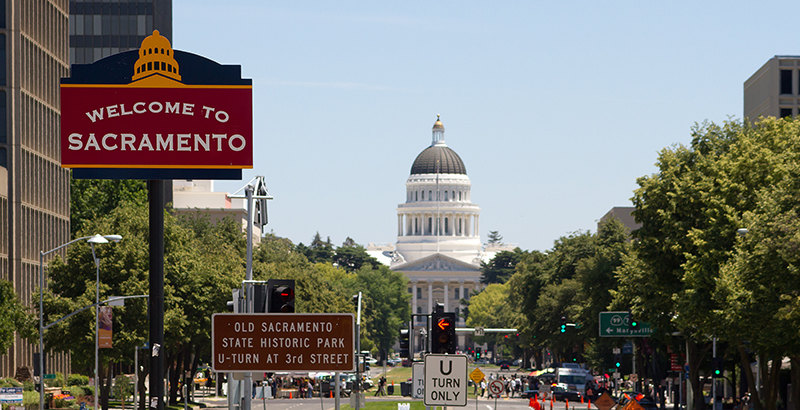Antonucci: From Academics to Approvals to Appeals, How 4 New Bills Being Considered by California’s Legislature Could Reshape the Golden State’s Charter School Sector

Mike Antonucci’s Union Report appears most Wednesdays; see the full archive.
California’s public employee unions have fought tooth and nail against charter schools ever since the law authorizing them was introduced by then–state Sen. Gary Hart in 1992. It’s fair to say that many things have changed in the state over the years — the composition of the legislature and the governor’s office, the knowledge of parents and voters about charters, and the charter schools themselves.
One thing has remained constant: California’s public employee unions still don’t want charter schools around.
Unfortunately for the unions, charter schools have dual levels of support that make them a formidable opponent. There is now a substantial number of families who either have children in charters or have already put their children through as many as 12 years of charter schooling.
However, this grassroots support would not count for much in the political arena if there weren’t also advocacy organizations and deep-pocketed supporters to challenge the unions’ clout.
The combination of the two makes it virtually impossible to eliminate or drastically reduce the number of charter schools. But the current political climate is welcoming to union legislative efforts to limit and transform the charter schools that do exist.
Last month, Gov. Gavin Newsom signed into law Senate Bill 126, which made charter schools subject to the state’s open meeting, public records and conflict-of-interest laws. As the most reasonable of the proposed regulations, it passed both houses of the legislature easily.
There is a package of four other bills working its way through the committee process. If all four become law, they will alter the charter school system, and their effect will trickle down to transform the operations of individual charter schools.
Assembly Bill 1505 currently sits in the Appropriations Committee, having passed out of the Education Committee on a 4-1 vote. It is the most far-reaching of the four bills.
One provision would make school districts the sole authorizing authority for new charters. A charter school operator wishing to open multiple schools within a county would need the approval of each affected school district. Existing charter schools currently operating under approval by the state Board of Education would lose their authorization when their charter next comes up for renewal.
The bill would also eliminate the appeals process for rejected charters. Unions don’t like charters opening over the objections of local school boards, but Hart, a Democrat from Santa Barbara, explained why he put the appeals process in the original law. “School boards and school administrators might oppose any charter because it might mean less district control, less revenue and more competition,” he told EdSource last year.
The bill would allow school districts to authorize charters for as little as two years, making them less appealing to parents seeking academic stability for their children.
The current law spells out what is required to revoke a charter but states that “increases in pupil academic achievement for all groups of pupils” must be the most important factor in deciding whether to revoke or not.
AB 1505 would eliminate that provision.
Assembly Bill 1506 is also in the Appropriations Committee after being passed by the Education Committee 4-1. It caps the number of charter schools and charter enrollment to whatever numbers exist on Jan. 1, 2020.
Assembly Bill 1507 was approved 4-1 in the Education Committee but has not yet been assigned to Appropriations. This bill would disallow a charter school from opening outside the geographic boundaries of the authorizing school district, even on a temporary basis.
Assembly Bill 1508 has not yet been heard in the Education Committee. It allows districts to deny a charter application because it “does not contain a clear explanation of why the proposed model cannot be accomplished within the school district structure of neighborhood public schools and that the charter school would have a negative financial, academic or facilities impact on neighborhood public schools or the school district.”
AB 1508 goes to the heart of the philosophical debate over charters. On the one hand, if the charter cannot explain why it’s necessary, why have it? On the other hand, if the school district can provide the type of program a charter can bring, why doesn’t it?
If all four of these bills pass, California will eventually have only two types of charter schools: those with a niche mission for a subgroup of students — say, a French immersion school — or those that are virtually indistinguishable from traditional public schools.
What would eventually disappear from all but a handful of charter-friendly districts are those charters with a traditional mission that think they can do it better than district schools. Districts won’t approve them, and they won’t get the chance to appeal.
It might seem odd that unions want the school boards they constantly excoriate to be the sole authorizers for charters. But in the unions’ view, California’s school districts have one redeeming quality that charters try to avoid: They don’t mind spending money they don’t have.
Get stories like these delivered straight to your inbox. Sign up for The 74 Newsletter

;)